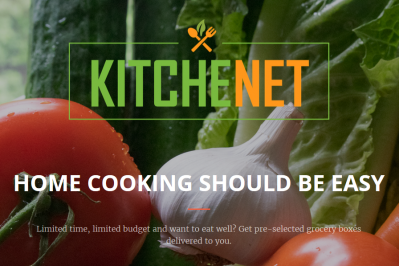What Amazon’s meal kit service means to category’s future and competition with grocery retailers

“We have a wicked suspicion that Amazon’s experiment with a branded meal kit could simply be a way of trying to drive Blue Apron further down, which appears to be what’s happening,” he told FoodNavigator-USA.
Reflecting Waxman’s words, Blue Apron shares experienced a drop last week, which financial analysts link to a July 6 patent filing by Amazon titled ‘We do the Prep. You be the chef,’ the Wall Street Journal reported.
One Amazon Prime member told GeekWire that the meal kit service has in fact been available since June, launched in stealth mode, though only visible when searched from specific ZIP codes. Bloggers Table Manners Aside posted pictures of their experience cooking with the meal kit in December 2016, which they purchased from the cashier-less Amazon Go beta store in Seattle.
The patent filing describes the service as “prepared food kits composed of meat, poultry, fish, seafood, fruit and/or and vegetables and also including sauces or seasonings, ready for cooking and assembly as a meal; Frozen, prepared, and packaged meals consisting of meat, poultry, fish, seafood, fruit and/or vegetables; fruit salads and vegetable salads; soups and preparations for making soups.”
Food and beverage – one of Amazon’s last frontiers
The patent filing was Amazon’s next shockwave to the food industry, not a month after it announced it is acquiring Whole Foods. Industry analysts see the moves as part of Amazon’s quest to dominate in selling consumers everything, though the online retailer’s food and beverage market share have lagged behind other categories such as electronics and sporting goods.
The meal kit space itself is estimated to be at $4.65bn in 2017, according to Packaged Facts data, up from $1.5bn in 2016. The firm projects sales in the category will experience a 20% compound annual growth rate (CAGR) over the next five years, hitting $11.6bn by 2020.
According to Waxman, if Amazon seriously invests in its meal kit service beyond just dragging Blue Apron down, it can dominate the space. “In part that could happen because it could drive off the big food companies like Unilever and General Mills that have made initial investments in meal kits through existing players,” he said.
Amazon’s advantage: Packaging
Amazon isn’t entirely new in the meal kit space—it’s been involved in the category, but more from the logistics side. It delivers Martha Stewart’s meal kit service Martha & Marley Spoon and Tyson Foods’ Tyson Tastemakers.
Its shipping experience and dominance in general means Amazon’s leg up in the meal kit space lies in packaging, Waxman added. Josh Chadd, the Prime Member that shared his experiences using the meal kit with GeekWire, said that “he thinks the box that everything came in seemed a little smaller than similar services, and everything was pretty easily recyclable except for a couple plastic bags.”
Waxman added: “Amazon, because of its size and deep pockets, could take the lead in using the eco-friendly approach forcing the competition to do the same or leave the game…this could very well be the direction that meal kit delivery services must take.”
A competitive arena for brick-and-mortar retailers too
The online giant’s entrance in meal kits may make brick-and-mortar retailers anxious, especially retailers that focus on serving affluent demographics. Meal kits are expected to bite into some grocery sales in categories such as meat, according to market research firm Nielsen back in January.
And while brick-and-mortar retailers have experienced a growth spurt in their grocerant—or prepared food—section the past few years (an estimated 10.8% sales growth in 2016, according to Technomic), investing more in prepared foods also means retailers are competing directly with the burgeoning meal kit market, as both offer convenience yet a home-cooked appeal to consumers.
With Amazon’s intimidating presence in the meal kit category, retailers can differentiate themselves by becoming a destination, said Nielsen director of fresh growth and strategy Sarah Schmansky.
“There’s a huge opportunity for retailers to focus on meal solutions in store, to really create a destination for their customers,” she told FoodNavigator-USA. “The whole digital and online era is definitely impacting brick-and-mortar and visits to the store.”
“But the fresh department is really where retailers can drive trips and frequency back to the store by creating a destination [and] experience,” she added.
But it’s also worth a shot for brick-and-mortar retailers to compete in both physical and digital spaces, considering Amazon is in both with its recently acquired Whole Foods chain.
“The pure fact that retailers have everything they need under their roof to pull together a meal kit, there’ a big opportunity for retailers to capitalize on this growing trend,” she said. “We know it’s not a fad, it’s a trend, it’ definitely here to stay.”














